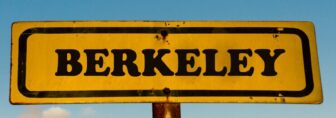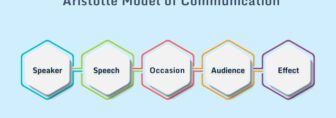Reasons Why Your Homeowner’s Insurance Rate Went Up

Navigating the landscape of homeowners’ insurance can often feel like traversing a maze. Rates fluctuate, and homeowners are left wondering why their premiums have seen sudden hikes. Whether you’re a seasoned property owner or someone who’s recently stepped into the realm of homeownership, understanding the nuances of insurance rates is crucial. Insurance isn’t just a protective measure—it’s an investment in the security of one’s most valuable asset. But why do these rates change? What factors play into this rise and fall? This article delves deep into the world of homeowners’ insurance, seeking answers to the pressing questions every homeowner grapples with. From the reasons behind rate increases to the intricacies of insurance forms, we aim to shed light on the complexities of this essential safeguard, ensuring every reader is equipped with the knowledge they need.
Understanding Home Insurance Rates
Home insurance rates are a culmination of various factors that insurers consider when determining the premium you’ll pay. They are pivotal in shaping how much each homeowner contributes to safeguarding their property. Here’s a breakdown of what goes into these rates:
- Location of the Property: Homes in areas prone to natural disasters, like hurricanes or wildfires, typically have higher rates.
- Property Value: The higher the value of the home, the more it costs to insure, as potential repairs or rebuilding would be more costly.
- Age and Condition: Older homes or those in poor condition often attract higher rates due to increased risks of problems arising.
- Safety Measures: Homes with security systems, smoke detectors, and other safety features might enjoy reduced rates.
- Claim History: Homeowners who’ve previously made claims might see a rate increase, as they are seen as a higher risk to insurers.
Understanding these components is vital to comprehend the varying insurance costs and why two seemingly similar properties might attract different rates.
Why Did My Home Insurance Go Up?
It’s a question that plagues many homeowners: “Why did my insurance premium increase even though I haven’t made a claim?” Several factors can lead to a hike in your home insurance, and understanding them can provide clarity in this often confusing arena.
- Natural Disasters & Increased Risks: If your locality has recently experienced natural disasters like hurricanes, floods, or wildfires, insurance companies may perceive a higher risk and subsequently increase rates for the entire area.
- Home Improvements: While renovating your home can increase its value, it can also increase replacement costs. A new addition, pool, or even certain types of landscaping can lead to higher premiums.
- Inflation: Just as the cost of everyday goods can rise, the cost to rebuild or repair homes also goes up over time. Insurance companies often adjust for inflation, which can result in a rise in premiums.
- Claims in Your Area: Even if you haven’t filed a claim, a high number of claims in your neighborhood or city can influence rates for everyone in that locale.
- Changes in Credit Score: A significant drop in your credit score might affect your premium, as insurers sometimes use credit-based insurance scores to help determine rates.
- Policy Changes: Opting for more coverage or reducing your deductible will increase your premium. Conversely, increasing your deductible or reducing coverage can decrease it.
Understanding these reasons can offer insights into the dynamics of insurance rate adjustments. Being proactive, like periodically reviewing your policy and ensuring you’re only paying for the coverage you need, can help in managing these costs. And for more intricate matters, firms like Callender Bowlin can offer guidance.
The Aftermath Of A Claim: Cost Implications
Filing a claim is a double-edged sword. While insurance is meant to offer financial protection in the face of unforeseen events, it’s essential to understand the potential ramifications on your premiums afterward.
- Claim Frequency: It’s not just about the size of the claim, but how often you claim. Homeowners who file multiple claims within a short time frame are seen as high-risk by insurance companies. This can lead to an uptick in premiums or, in extreme cases, non-renewal of policies.
- Nature of the Claim: Certain claims, such as those related to water damage, might result in higher rate hikes compared to others because they indicate potential recurring issues.
- Claim Amount: While small claims might not significantly affect your premium, larger claims can cause noticeable increases. It’s often advisable to assess whether making a claim for minor damages is worth the potential premium hike.
- Regional Trends: If many homeowners in your area file claims simultaneously, like after a natural disaster, insurers might increase rates regionally due to the perceived heightened risk.
- Claim-Free Discounts: Many insurance companies offer discounts to homeowners who haven’t filed a claim for a set number of years. Filing a claim can mean losing out on these discounts.
In essence, while insurance exists to safeguard homeowners, it’s crucial to approach claims judiciously. Evaluate the immediate benefit against the long-term cost implications of higher premiums.
The Challenges In Acquiring Homeowners Insurance
Securing homeowners insurance isn’t always straightforward. Various factors can make it difficult for a homeowner to obtain a policy, or at least one with reasonable premiums:
- High-Risk Areas: Homes located in zones frequently affected by natural disasters like floods, earthquakes, or wildfires might find it tougher to get insurance. Some providers might even deny coverage outright due to the heightened risk.
- Poor Home Maintenance: Insurance providers often inspect homes before underwriting a policy. A poorly maintained home, showing signs of wear, tear, or potential hazards, can be a red flag, leading to higher premiums or even denial of coverage.
- Frequent Claims History: If you’ve frequently lodged claims in the past, insurers might view your property as high-risk, making it harder to get a favorable rate or policy.
- Aggressive Pets: Owning breeds considered aggressive can result in insurance hesitancy, given the potential liability concerns.
Understanding and addressing these challenges, possibly with the help of a professional, can ease the insurance acquisition process.
Diving Deeper: The Most Common Form Of Homeowners Insurance
Homeowners insurance isn’t a one-size-fits-all solution. Policies come in various forms, tailored to different needs and circumstances. However, the most prevalent type among homeowners is the HO-3 or the “Special Form.”
Here’s a closer look at the HO-3:
- Comprehensive Coverage: The reason behind its popularity is the extensive protection it offers. It typically covers all risks to a home’s structure, except for those explicitly excluded, such as earthquakes or floods.
- Personal Property Protection: While it provides an all-risk cover for the structure, the coverage for personal belongings is usually on a “named perils” basis. This means only risks explicitly listed in the policy (like theft or fire) are covered.
- Liability Protection: HO-3 includes liability coverage, protecting homeowners from lawsuits if someone gets injured on their property or if there’s damage caused to someone else’s property.
- Additional Living Expenses: If a covered disaster makes your home uninhabitable, this component takes care of additional costs, like hotel stays.
Understanding the ins and outs of the HO-3 policy and its coverage limitations is crucial. This knowledge helps homeowners ensure they’re adequately protected and can be vital when liaising with professionals in the event of disputes or claims.
Conclusion
Navigating the realm of homeowners insurance can often feel like treading murky waters. Rates can fluctuate, and understanding the reasons behind these changes is crucial to making informed decisions. From the aftershocks of filing a claim to the inherent complexities of the industry, homeowners must arm themselves with the knowledge to ensure they are not caught off guard. Recognizing the most common form of homeowners insurance and its specifics can further safeguard against potential pitfalls. In an ever-evolving landscape where costs seem to be on an upward trajectory, one constant remains the value of being informed. Partnering with professionals can provide an additional layer of reassurance and guidance, ensuring that your home, your sanctuary, remains well-protected.
Additional:



























